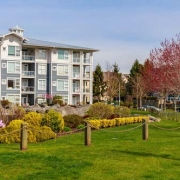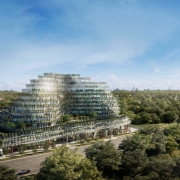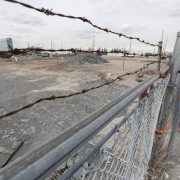Canada’s housing supply fell short of demand even before COVID struck, a situation the pandemic brought into sharp relief. It’s not that home builders have been sitting idle. Housing starts over the past 12 months were the strongest since the mid-1970s, and the number of homes under construction is at an all-time high. The problem is that it takes time for new construction to reach the move-in stage. The average timeline has more than doubled over the past two decades, from 9 months to 21 months.
The construction boom is beginning to deliver more move-in-ready supply. Housing completions should accelerate in the coming year—provided supply chain-disruptions in the construction industry don’t interfere too much with ongoing work. Yet the market impact will vary across the country. Smaller markets are seeing the bigger relative increase in housing starts, and will get more supply sooner. It will be a longer wait in some of Canada’s larger markets, where the pandemic construction boom has been more subdued and heavily concentrated in slower-to-build multi-unit dwellings. Big-city supply issues are likely to persist, especially as stronger immigration drives up housing demand in the coming years.
The pandemic got builders cracking like it’s 1977
The pandemic triggered a sharp drop in interest rates, a huge build-up in household savings and changing housing needs that sent an unprecedented wave of Canadians scurrying to buy a home. The stampede syphoned off the stock of existing homes for sale and depleted newly built home inventories, especially for sought-after single-family and other low-rise homes. These, and sky-rocketing prices, proved unambiguous signals for builders—and municipal permit-issuing authorities—to get cracking and expand Canada’s housing stock.
Their answer has been dramatic. In the past 12 months, builders across the country have poured the foundations (defining a housing start) for the highest number of housing units (260,500) than at any time since 1977. This represented a 26%, or 53,600-unit, increase relative to the 2015-2019 average pace (206,900 units).
There have never been so many units under construction in Canada
The pile of new projects put more strain on builders’ already record workload. There are now close to 320,000 housing units under construction in Canada. This is by far the highest number, and a 12% (or more than 30,000-unit) increase from the end of 2019. About three-quarters of the total are apartments (mostly condos but also rental).
So far, new homes ready for occupancy are rising much less dramatically
All that construction activity has yet to significantly boost the move-in-ready supply. It can take from six months to several years to complete a unit, depending on the type. Various pandemic-related disruptions and challenges no doubt lengthened the process. Still, completions are rising: builders have completed 215,000 new units in the past 12 months, up from an average of 193,000 units from 2015 to 2019. This continues to be short of the 220,000 average increase in the number of Canadian households in the four years preceding the pandemic.
The pace is poised to accelerate
We expect completions to rise materially in the coming year as builders put the finishing touches on units started both before and during the pandemic. The sheer number of apartments under construction (with typically longer production timelines) should also support high completion counts beyond next year. While many factors can alter delivery schedules, we think as many as 240,000 housing units could be completed in 2022 nationwide—the biggest push in a generation to address supply issues. Stronger levels like this will need to be repeated in years to come to make up for under-building in the past decade and meet growing demand arising from record projected immigration. Relative to population, completions have stayed below their long-term average throughout the 2010s.
Smaller markets to see a quicker boost in supply
Canadians’ love affair with smaller towns’ lifestyle and relative affordability during the pandemic has sparked a construction boom unequaled among larger markets (all proportions considered). Rural and small urban areas recorded the strongest growth in housing starts in the past 12 months relative to the 2015-2019 period, rising 51% and 33%, respectively. Medium-size urban areas weren’t far behind with an increase of 27%. Not only that, the types of housing built are predominantly (70%) single-detached and other ground-oriented homes, which have usually shorter construction timelines. This means the builder response in smaller markets is not only significant size-wise but its impact on supply will be quicker than in larger metropolitan areas where apartments accounted for 62% of starts in the past 12 months.
This isn’t to say big-city builders dragged their feet during the pandemic. They, too, poured many more foundations (housing starts climbed 23%). In fact, census metropolitan areas (CMAs) accounted for the bulk (38,000 units) of the overall increase in housing starts (57,000 units) from the 2015-2019 average. It’s just that the timeline toward completions will be longer for the most part.
The picture in major markets is mixed
Housing starts barely increased in the Toronto region in the past 12 months compared to the 2015-2019 average, rising just 1.4% or 500 units. The ramp-up in new construction was a little more vigorous in Edmonton (up 4.1%), Calgary (up 7.2%) and Vancouver (up 10.3%) but still well below the national average (26%). Relatively flat starts in the Toronto area in part reflect a significant drop in pre-construction condo sales in 2018 and 2019 following Ontario’s Fair Housing Plan in 2017. A recent spike in building-permit issuance suggests the pace could pick up. Failing that, the supply response will look underwhelming in the region—prolonging the significant challenges facing buyers and renters.
Builders are working hard to address supply issues in Montreal and Ottawa. Housing starts over the past 12 months were up 11,000 units (or 50%) from the 2015-2019 average in the Montreal area, and up 5,700 units (or 65%) in Ottawa-Gatineau. Purpose-built rental units accounted for more than 90% of the increase in Montreal.
Are the right kinds of unit being built?
The sheer number of homes slated to come to market is one thing. But will they be the right ones to meet demand across the country? Yes and no. The new units for the most part have already found takers. Builders and developers most often start construction on projects only after they have firm sales agreements in hand. The market’s answer is therefore yes. At the same time, it’s unlikely the new supply will fill the huge housing gap for Canadians of modest means. High and rising construction costs pose tremendous challenges for builders to produce more affordable options, leaving many Canadians struggling to get on the housing ladder.
The pandemic has also thrown into question several prior housing preferences. Extended time spent at home prompted many Canadians to seek larger living spaces, and loosened attachment to live in core urban areas. While it’s unclear how permanent these changes will be, there’s a potential that unit size, configuration and location of recently started high-rise projects may fall out of favour. Apartments (both condos and purpose-built rental) not only accounted for most (55%) of the housing starts over the past 12 months, but also showed the biggest increase (39%) from the 2015-2019 average.
Mix of new housing needs recalibrating
Slow supply responsiveness has been a central issue for Canada’s housing market for years. While we’re encouraged to see municipalities issuing more building permits and builders cranking up housing starts over the past 12 months, it still takes close to two years on average to build a home (ranging widely across housing types). This average construction length has more than doubled over the past two decades. The main reason is apartments (taking the longest to build) have come to represent a significantly larger share of homes built. Limited construction capacity has also been a factor in some parts of the country. And those timelines don’t even count the time (and resources) required to obtain the proper approvals and permits to get shovels in the ground.
Part of the solution to Canada’s housing market imbalance runs through the mix of new units being built: a recalibration toward project types that can deliver move-in-ready units more quickly to market—like low– or mid-rise housing—would boost supply responsiveness. Addressing the ‘missing middle’ (lack of medium-density housing) in some of Canada’s largest urban areas, for example, would be a significant step in that direction. This should be done in conjunction with a sharp focus on streamlining regulatory and project approval processes, and tackling skilled trade shortages and other constraints that limit production capacity.






 Maziar Moini, Broker of Record - Home Leader Realty Inc.
300 Richmond St. W., #300, Toronto, ON M5V-1X2
Maziar Moini, Broker of Record - Home Leader Realty Inc.
300 Richmond St. W., #300, Toronto, ON M5V-1X2

